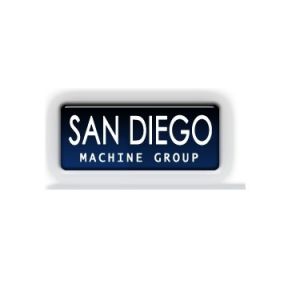Processing Methods of CNC Machining For CeramicPosted by San Diego Machine on September 29th, 2021 It might be a complex task to pick the best material for your manufacturing process at times. Sometimes exotic materials such as machinable ceramics like Macro or Boron Nitride offer particular properties that only ceramics possesses, they could be the best material for your task. Ceramic artists generally use ceramics to produce pots, stoneware, knives, and artwork. Despite the fact that ceramic artists use kilns for ceramic production, precision ceramic machining manufactures are making great progress modernizing the Ceramic CNC machining process by using innovative tooling and maching strategies, these lead to more accurate parts with higher quality surface finishes. Because of its different mechanical properties, machining ceramic parts is extremely difficult and challenging most machine shops will not work with ceramic materials. However, San Diego Machine Group has significant experience in the art and process of machining CNC machinable ceramics like Macor and Boron Nitride – we routinely perform what others consider CNC machining miracles. Ceramic machining processes can incorporate forming, firing and finishing. Here, forming is only meant to represent the various processes used to shape a ceramic piece. Such process include dry axial pressing and isostatic processing, which are both used to form dry powder; slip casting, which begins instead with a powder/liquid mix, or slurry; and injection molding, achieved only with a ceramic-plastic blend. These processes are only used to set the ceramic piece in the necessary desired shape, not to make it strong and stable. Typically, a usable component requires a subsequent firing, or sintering, process. This process fuses the ceramics particles together, yielding a more durable piece. In some cases, a cementation process is used instead of firing. Cementation involves coating the ceramic with a liquid binder material, which eventually reacts to form the desired bonds. San Diego Machine Group works with machineable ceramics that require no post process firing – these materials offer ceramic properties – and the ability to assure part tolerance and accurate detailed fine precision CNC manufacturing because there is not post firing process. We can thread ceramics and offer microscopic visual inspection to ensure part quality. Finishing processes can be performed before or after the firing process. Each method has its utilization. Pre-firing machining typically is not a specific detailed process, since a ceramic component will normally shrink after firing, and because pre-firing ceramics are more delicate during this stage. It is performed mainly to simplify post-firing finishing. Post-firing machining operations concern processes we might relate typically with machining. These include grinding, lapping, laser cutting, cutting and chemical etching. Most of the modern ceramics are designed to resist the strain and force of these heavy machining operations. Other processes used on ceramics are diamond saw-cutting and drilling, as well as electron beam machining. Due to the advances in ceramic engineering, these operations can achieve far more precision than was previously possible and accessible. San Diego Machine Group is a machine shop in a 16000 sq. ft. air conditioned workspace that is ITAR and ISO9001 certified. We have over 50 employees. We cover all of your custom manufacturing needs under one roof. For more information on our offerings, contact us or visit our website www.sandiegomachine.com Like it? Share it!More by this author |


